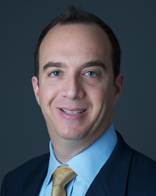Why Physicians, Patients are Choosing Concierge Medicine
- As the healthcare insurance industry moves toward pay-for-performance and value-based care reimbursement, many physicians and patients are seeking differing ways to work toward improved care and decreased costs. Some patients are finding the amount of time their primary care physicians have for them dwindling and look for other methods of healthcare delivery to increase the amount of one-on-one communication with their doctors. Many have turned to concierge medicine to address these problems.

To gain this closer relationship and more time spent with their primary care doctor, patients pay an annual membership fee to be part of a concierge medicine model. Doctors have fewer patients, but spend more time addressing medical concerns and preventing disease among their set of patients.
“This model allows me to have more time with patients and it allows me to dedicate more time and office staff time to the communication necessary to make care better. It makes me more rapidly available to my patients and their families,” Dr. Jim Williams, a primary care practitioner who uses the concierge medicine model, told HealthPayerIntelligence.com.
The amount of time a patient spends talking with a physician who uses this concierge medicine model of payment goes far beyond that of a standard medical appointment, Dr. Williams explains.
“The benefits for the patient are that they find their doctor is far more accessible in person because the office visits last much longer – as long as the patient needs, in fact. The shortest visit is 30 minutes. That’s how we block the time. They can be made much longer. We have 90-minute visits as well,” Williams clarified.
“There’s no sense of being rushed. Furthermore, the practice is much smaller so the doctor and his/her staff gets to know each patient far more intimately. Far more time is available on the telephone – not just with the doctor, but with staff, the business manager and the nurse as well.”
The concierge medicine model doesn’t just benefit the patient community, as it allows physicians a greater chance to work more directly with their patients as well. With the Centers for Medicare & Medicaid Services (CMS) and other health payers posing more quality care and electronic documentation requirements, doctors are seeking concierge medicine to spend more time with their patient base.
The medical practice Concierge Choice Physicians released a survey illustrating that patients are highly satisfied with their care through this reimbursement model. Out of all patients polled, 98 percent stated that communication with their primary care doctors has been enhanced through concierge medicine.
“We specifically analyze the revenue generated by physicians individually and collectively within a practice,” Wayne Lipton, Managing Partner at Concierge Choice Physicians, told RevCycleIntelligence.com about his facility’s revenue cycle management practices. “The revenue per hour in a concierge program that we set up is usually twice the revenue rate per hour spent than they would generate in a traditional practice.”
“In today’s world, the good news is that the concierge programs and the pricing that we work with inevitably affects the practice in the aggregate dollars in a significant way – anywhere from 10 percent of revenue across the board to as much as 30 to 40 percent with the same amount of overhead,” he continued.
“It’s a very interesting balance. If you price is too high, you get too few members and it’s unstable. If you price it too low, it doesn’t add value to the practice. Pricing it at the right place is one of the pieces of the puzzle that we bring to the table.”
With physician shortages affecting the healthcare space negatively in recent years, could the move toward concierge medicine be the answer many doctors have been seeking? With revenue an important aspect to keeping doctors dedicated to their profession, billing patients through a concierge method of care may reduce physician shortages around the country.
Through annual or monthly fees, patients are able to receive an extra set of services including nutritional counseling as well as wellness and fitness assistance. Closer connection with physicians by phone or email is also offered in many of these packages. Physicians and medical practices will benefit from annual member fees of anywhere from $1,400 to $1,700 per patient.
The American Academy of Private Physicians (AAPP) and Kareo released a survey last September showing that 33 percent of private practice reimbursement models were in the form of concierge medicine. These practices stated that, on average, they had been operating through a concierge model for eight years. While the majority of those polled built their practice from the ground up, 47 percent transitioned from an insurance-based facility.
 In an exclusive interview with RevCycleIntelligence.com, Matt Jacobson, CEO of concierge practice SignatureMD, offered his perspective on how this new payment model could revolutionize the healthcare industry and solve many ongoing payment reform issues.
In an exclusive interview with RevCycleIntelligence.com, Matt Jacobson, CEO of concierge practice SignatureMD, offered his perspective on how this new payment model could revolutionize the healthcare industry and solve many ongoing payment reform issues.
When asked about the biggest problems surrounding traditional healthcare payment options and how concierge medicine solves these issues, Jacobson replied, “Traditional healthcare payment options pay for procedures instead of results. Physicians are penalized financially for spending more time with patients delivering thoughtful, whole person care. [Concierge medicine fixes this problem.]”
When asked whether concierge medicine reduces or stabilizes rising healthcare costs, Jacobson answered, “In the medium or long run, concierge medicine should reduce overall healthcare expenditure. In the U.S. we allocate 3 percent of our healthcare spending to prevention, and yet 72 percent of diseases plaguing the country are preventable. Concierge medicine is based on the principle that up-front investment in wellness will result in a reduction in acute healthcare episodes.”
When asked why the concierge payment model has grown in popularity in recent years, Jacobson explained that, “Concierge medicine's growth is being fueled by both physicians and patients. Physicians are fed up with assembly line medicine in which they get paid based on the number of patients they see per day. Doctors want to practice good medicine instead of fast medicine. Similarly, patients do not want to feel like a number. They want to lock into a close relationship with a trusted physician who will do what's right for them instead of what's right according to the payer.”
